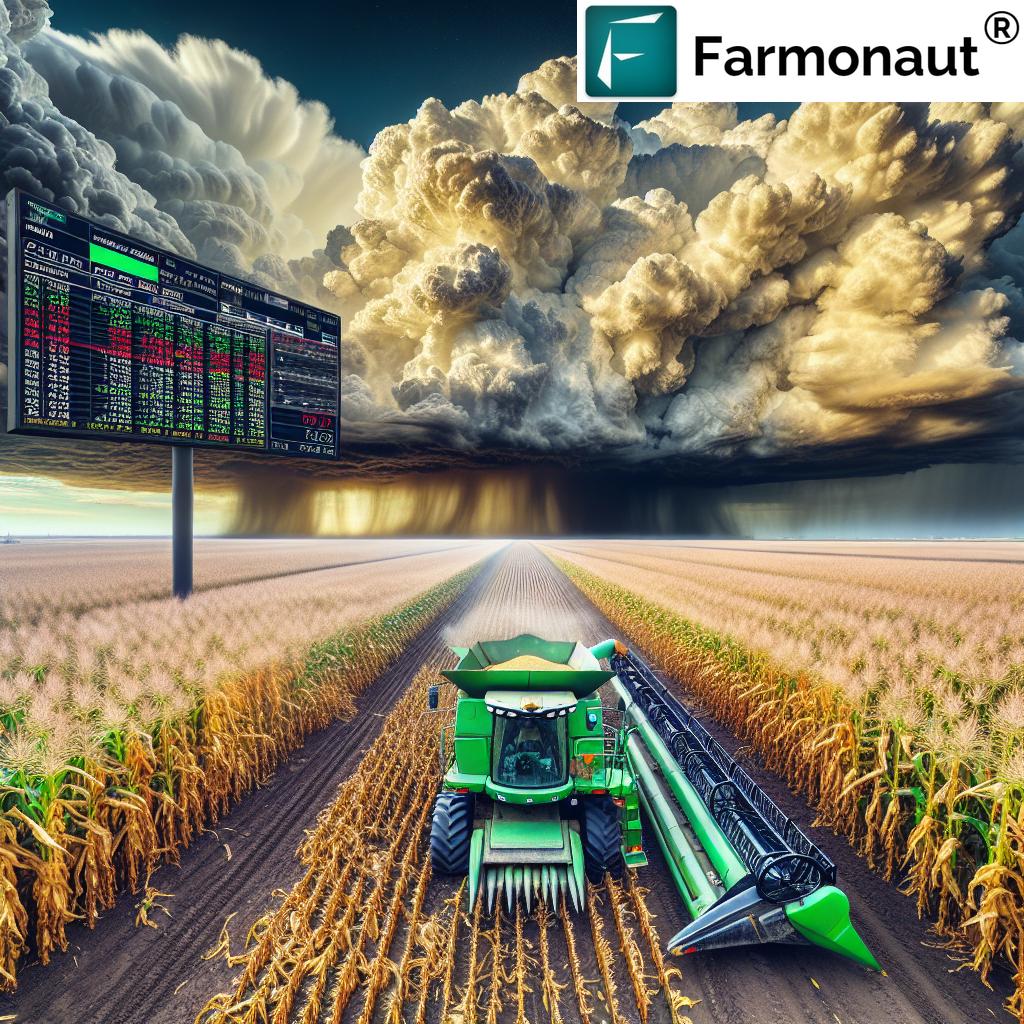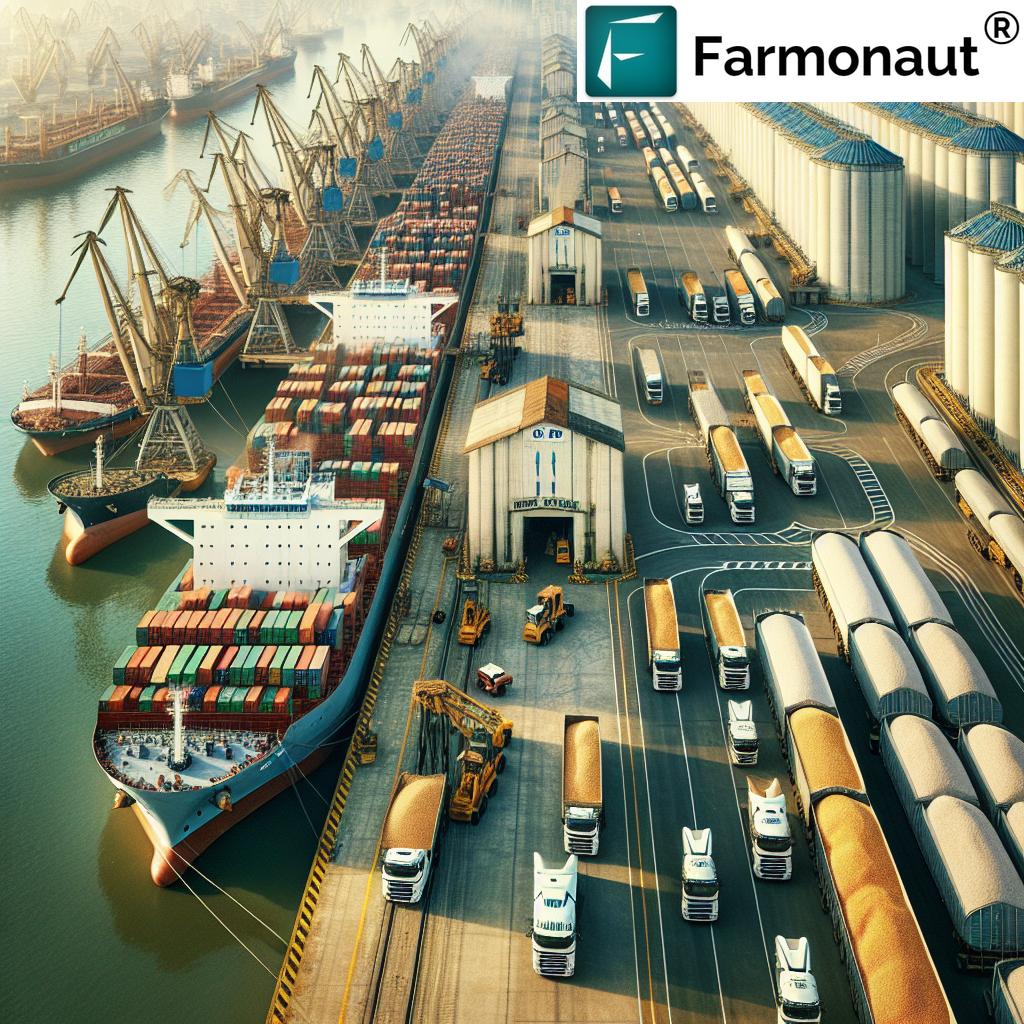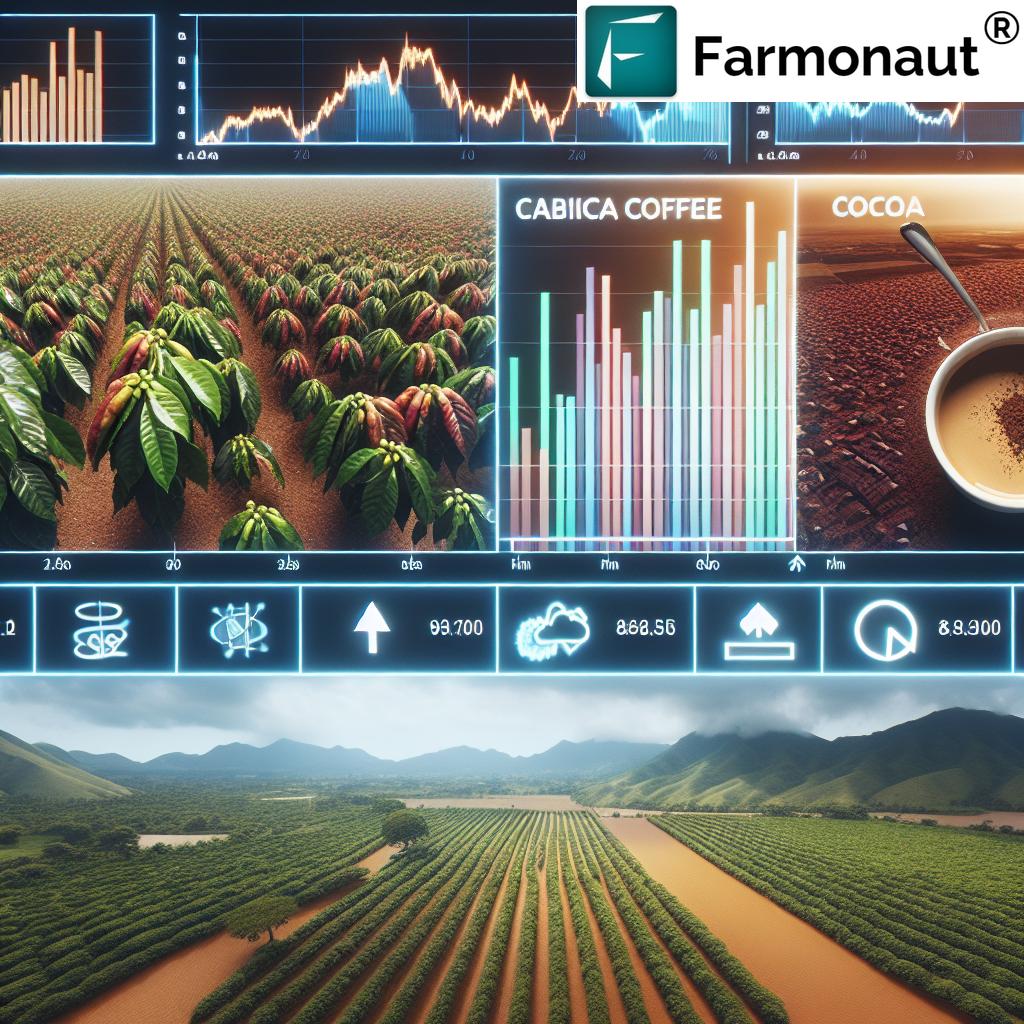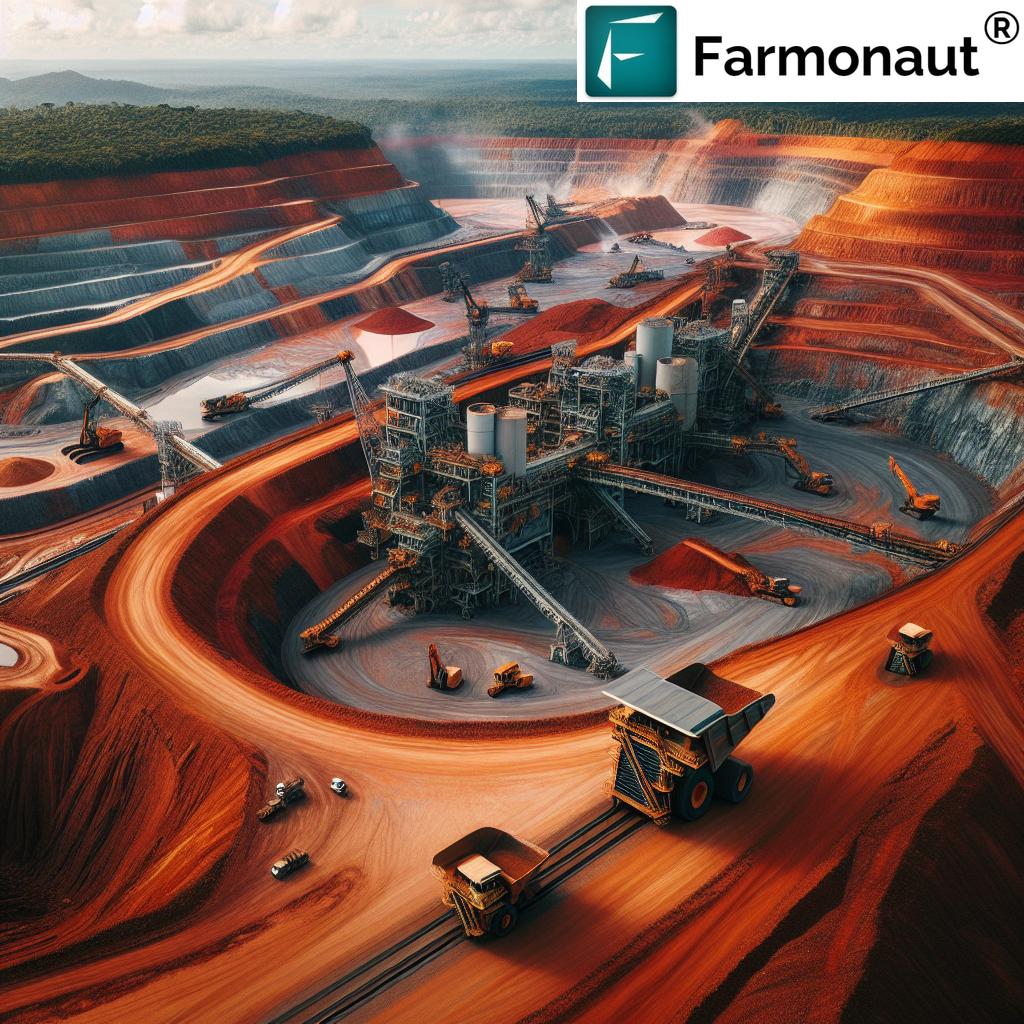Best Soil & Fertilizer for Soybeans: Brazil & Maharashtra – 2025 Guide to High-Yield Agriculture Soybean Farming
“Brazil’s soybean yields can exceed 3,200 kg/ha with precision fertilizer application and optimal soil pH of 6.0-6.5.”
Introduction: The Global Importance of Soybean Agriculture
Soybean (Glycine max) remains a critical crop in global agriculture, playing a pivotal role as a source of protein and oil. Across the world, agriculture soybean production supports food, feed, and numerous industrial markets. As we move toward 2025, optimizing cultivation practices in regions like Brazil and Maharashtra, India is more essential than ever, given growing demand, climate challenges, and the push for sustainable farming.
Understanding the best soil for soybeans, appropriate fertilizer strategies, and modern agronomic technologies is indispensable to maximize yield, reduce input costs, and ensure soil health for the future.
In this comprehensive guide, we’ll cover the soil and fertilizer recommendations for soybeans, provide region-specific tips for Brazilian soybean and Maharashtra soybean agriculture, and detail the modern, sustainable practices poised to shape agriculture soybean productivity in 2025 and beyond.
Best Soil for Soybeans: Fundamental Characteristics
What is the Best Soil for Soybeans?
The best soil for soybeans generally features these key qualities:
- Well-drained, loamy soil with an optimum pH between 6.0–6.8 (slightly acidic to near-neutral): This pH promotes optimal nutrient uptake and prevents deficiencies.
- Good moisture retention (high water holding capacity) while still providing aeration and preventing waterlogging.
- A balanced mix of sand, silt, and clay (loamy) is ideal—too much clay increases risk of compaction, while sandy soils may dry quickly and require more irrigation.
- Organic matter content (ideally 2.5–3.5% or higher) improves fertility and microbial activity.
Poorly drained or waterlogged soils significantly reduce yields due to root diseases, nutrient deficiencies, and restricted root growth.
Regional Examples of the Best Soil for Farming Soybeans
- Brazil – Cerrado Region: Sandy to loamy soils, originally acidic and low in natural fertility, have been effectively converted into soybean farmland through management and inputs such as lime and organic matter, showcasing the adaptability of soybeans given proper conditions.
- Maharashtra, India: Black cotton soils (vertisols), rich in clay, retain moisture well and are widely used for soybean. They may crack during dry spells, so timely irrigation management is crucial to avoid crop stress.
Brazilian Soybean Cultivation: Best Soil & Fertilizer Practices
Soil Management in the World’s Soybean Powerhouse
Brazil stands as a major producing region for soybeans globally—states like Mato Grosso, Paraná, and the Cerrado region are renowned for massive soybean yields. However, the journey to such productivity involves significant soil adaptation:
- Sandy to loamy soils in the Cerrado are inherently acidic (pH < 5.5) and require lime application to correct acidity (raise pH to 6.0-6.5 for optimal soybean growth).
- Organic matter is usually low due to intense weathering; thus, adding compost or green manure boosts microbial activity and soil structure.
Lime application not only raises pH but also improves nutrient availability, boosting uptake of essential elements and reducing the risks due to aluminum toxicity.
Best Fertilizer and Nutrient Management in Brazil
- Phosphorus (P2O5): 60–100 kg/ha depending on soil tests. Phosphorus is essential for root growth, energy transfer, and pod development.
- Potassium (K2O): 40–80 kg/ha is recommended for robust seed development and disease resistance.
- Nitrogen: Soybeans fix their own nitrogen through root nodules in partnership with symbiotic Rhizobium bacteria. After good inoculation and proper conditions, additional N fertilizer is rarely needed except in soils with low nodulation or in high-production systems with poor biological fixation.
- Micronutrients: Zinc and boron supplements may be required as deficiencies are common in highly weathered Cerrado soils.
- Lime (CaCO3): 2–5 tons/ha depending on soil buffer capacity, to counteract acidity and create conditions for best nutrient availability.
- Precision agriculture is increasingly vital—using satellite soil mapping, Brazilian soybean farmers allocate fertilizers exactly where needed, reducing costs and maximizing yields.
Key Brazilian Practices for Sustainable Soybean Productivity
- Deep tillage/no-till systems: Maintain soil structure, boost organic carbon, and combat erosion.
- Regular soil testing: Ensures balanced fertilizer application tailored to specific nutrient deficiencies.
- Crop rotation and cover cropping: Using corn, millet, or cover crops reduces disease, weeds, and enhances soil fertility.
These regionally optimized agronomic practices allow even sandy, low-fertility soils to become high-yield soybean farmland in Brazil.
“Maharashtra’s innovative farmers boost soybean yields by 25% using site-specific nutrient management and soil health monitoring.”
Maharashtra Soybean Agriculture: Best Soil & Fertilizer for Soybean in Maharashtra
Understanding Maharashtra’s Black Cotton (Vertisol) Soils
Maharashtra, one of India’s major soybean producing regions, is distinguished by its distinct black cotton soils (vertisols):
- High clay content and fertility—rich in nutrients, these soils retain moisture exceptionally well, a key feature for soybean cultivation during erratic monsoon patterns.
- However, black soils (Regur) tend to crack during dry spells, so timely irrigation is crucial to avoid crop stress.
- Soil pH ranges from 6.5 to 7.8, suitable for soybeans, though slightly alkaline soils might impede zinc uptake.
Best Fertilizer for Soybean in Maharashtra: 2025 Insights
- Nitrogen Needs: Soybean is a leguminous crop capable of fixing atmospheric nitrogen via symbiotic Rhizobium bacteria. Biofertilizer application (seed treatment with specific Rhizobium strains) is essential for optimum nitrogen fixation, reducing synthetic N fertilizer needs.
- Phosphorus (P2O5): 40–60 kg/ha recommended, essential for root and pod development.
- Potassium (K2O): 40 kg/ha required for robust seed filling and stress tolerance.
- Micronutrients: Sulfur, zinc, and boron often become limiting, especially zinc in alkaline/black soils. Timely application—soil or foliar—corrects deficiencies.
- Organic amendments: Applying FYM (farmyard manure) or compost (4-5 tons/ha) supplements nutrient availability and improves soil moisture retention.
- Timely irrigation avoids drought-induced stress, especially during pod setting and seed filling.
Major Soybean Farming Practices in Maharashtra (2025 and Beyond)
- Site-specific nutrient management: Farmers increasingly use digital tools and soil testing to identify and correct deficiencies, maximizing yield while reducing unnecessary inputs.
- Improved seed varieties: Drought-resistant, pest-resistant, and high-yielding seeds are promoted for optimal results.
- Timely sowing: Synchronizing with seasonal monsoon ensures uniform germination and helps manage pest/disease pressure.
- Use of biofertilizers and organic manure: Boosts soil health and reduces chemical fertilizer dependency.
Comparative Data Table: Brazil vs. Maharashtra—Ideal Soil & Fertilizer Recommendations for Soybean
| Parameter | Brazil (Estimated) | Maharashtra (Estimated) |
|---|---|---|
| Soil Type | Sandy to loamy (Cerrado); initially low fertility, highly weathered | Black cotton (Vertisol), high clay, fertile, moisture-retaining |
| Soil pH | 6.0–6.5 (after liming) | 6.5–7.8 (neutral to slightly alkaline) |
| Organic Matter (%) | 1.5–2.5 (needs supplementation) | 2.5–3.5 (naturally fertile) |
| Recommended Nitrogen (kg/ha) | 0–20 (after Rhizobium inoculation) | 0–15 (after Rhizobium inoculation) |
| Recommended Phosphorus (kg P2O5/ha) | 60–100 | 40–60 |
| Recommended Potassium (kg K2O/ha) | 40–80 | 40 |
| Key Micronutrients | Zinc, Boron, Molybdenum | Zinc, Sulfur, Boron |
| Lime Application | 2–5 t/ha for pH correction | Rarely required (higher baseline pH) |
| Expected Yield (tons/ha) | 2.8–3.2 (can exceed 3.2 with tech & precision ag) | 1.6–2.2 (up to 2.5 with improved practices) |
Tip: Regular soil and leaf testing is critical for both regions—technology empowers quick and cost-effective assessment of these core parameters, ensuring crops reach optimum productivity while protecting long-term soil fertility.
Modern Agronomic Practices & Innovative Technologies (2025)
Key Strategies for Maximizing Soybean Yield, Soil Fertility, and Sustainability
- Precision Agriculture & Satellite Monitoring: Use tools for remote soil and crop health analysis, enabling data-driven optimization of fertilizer and irrigation schedules.
- Balanced Nutrient Management: Phosphorus and potassium remain critical; micronutrient application (especially sulfur and zinc) is increasingly necessary for maintaining high-yield agriculture soybean production.
- Biofertilizers: Inoculating soybean seed with proper Rhizobium strains at sowing maximizes biological nitrogen fixation, reducing the need for synthetic N fertilizer.
- No-till and Conservation Tillage: Encourage organic matter retention, reduce erosion, improve soil structure, and enhance long-term productivity.
- Organic Amendments: Addition of compost, farmyard manure (FYM), or green manures improves soil fertility, moisture retention, and microbial activity.
- Timely Weed, Pest, and Disease Management: Employ integrated approaches with scouting, early detection, and targeted intervention to reduce losses.
- Efficient Irrigation Techniques: Drip or sprinkler irrigation avoids waterlogging and ensures adequate moisture during critical growth stages.
How Farmonaut Empowers Soybean Farmers with Technology & Innovation
At Farmonaut, we are committed to making cutting-edge satellite and AI-powered solutions affordable and accessible to everyone in the agriculture sector—including smallholder and large-scale soybean farmers across Brazil, Maharashtra, and beyond.
- Real-Time Satellite Crop Monitoring: We enable analysis of crop health, soil moisture levels, nutrient deficiencies, and even impending stress events—helping in the reduction of input wastage and maximization of yield per hectare.
- Jeevn AI Advisory: We provide actionable advice on weather, crop status, irrigation and fertilization, offering modern agronomic support tailored to your farm’s unique conditions.
- Blockchain Traceability & Carbon Footprinting: { Know more about sustainability solutions. }
- Easy Access: Our platform is available on Android, iOS, Web, and even via API for seamless integration.
Farmonaut’s satellite-based monitoring empowers farmers to understand their soil conditions, optimize sowing windows, apply the right fertilizer doses, and track every aspect of soybean crop development without costly fieldwork or guesswork.
For tech-savvy farmers and agronomists, Farmonaut provides API access (API, API Docs) to integrate satellite and weather data directly with your ag tools—powering the future of precision agriculture and resource management.
FAQ: Soybean Soil & Fertilizer Management
1. What is the optimum soil pH for soybean cultivation?
Answer: The preferred pH for soybeans is 6.0–6.8. This slightly acidic to near-neutral range maximizes nutrient availability and optimal uptake, crucial for high yields.
2. Why is lime required in Brazil’s Cerrado but not usually in Maharashtra’s black cotton soils?
Answer: Cerrado soils are highly acidic; lime application raises pH and reduces deficiencies. Maharashtra’s black soils are closer to neutral or mildly alkaline, so liming is seldom needed.
3. How important is Rhizobium inoculation in soybeans?
Answer: Extremely important. Rhizobium biofertilizer ensures atmospheric nitrogen fixation, reducing need for synthetic nitrogen fertilizer and improving sustainability.
4. What micronutrients are crucial for soybeans in these regions?
Answer: Brazil: Zinc, Boron, Molybdenum. Maharashtra: Zinc, Sulfur, Boron. Timely correction is necessary for high yields and balanced fertilization.
5. How can technology improve soybean productivity?
Answer: Using satellite monitoring, precision farming, and real-time nutrient analysis leads to better decision-making, improved yield per hectare, and reduced environmental impact.
6. Which modern irrigation methods are recommended for soybean?
Answer: Drip and sprinkler irrigation are both ideal for ensuring timely moisture without waterlogging, especially crucial in black cotton soils that can crack.
7. What is the benefit of using Farmonaut for soybean farmers?
Answer: We offer farmers satellite-driven, real-time insights on crop and soil conditions, helping optimize every aspect of soybean cultivation for higher profits and sustainability.
Conclusion: Sustainable Soybean Farming for the Future
Growing soybeans continues to play a pivotal role in global agriculture, providing a reliable source of protein and oil. Optimizing production now hinges on understanding the best soil and fertilizer practices for each region. In Brazil, adapting initially poor, acidic soils with lime and precision fertilizer application, plus conservation tillage, unlocks high yields. In Maharashtra, leveraging the natural talents of black cotton soils—paired with site-specific nutrient management, irrigation, and biofertilizer use—drives productivity forward.
By embracing modern agronomic technologies—from satellite remote sensing to blockchain traceability—the future of soybean farming in both Brazil and Maharashtra promises to be sustainable, resilient, and highly productive.
As we move into 2025 and beyond, balancing high output with resource conservation and environmental protection will be the gold standard for every soybean producer.
Farmonaut Subscription Options & API Access
Ready to elevate your soybean nutrient management? Farmonaut offers subscriptions for individuals, agribusinesses, and government agencies, all accessible via web/mobile app or API.
Stay updated with Farmonaut’s blog—your go-to resource for the latest in soybean soil, fertilizer, and modern farming technologies for 2025 and beyond.













